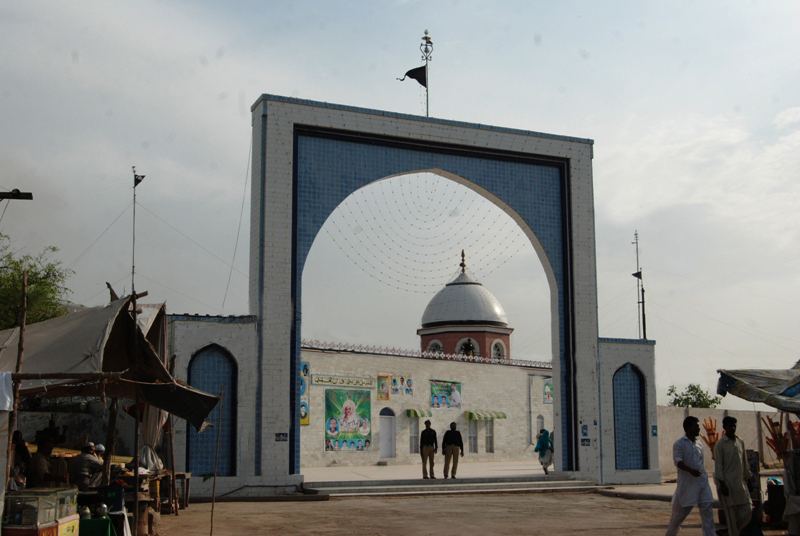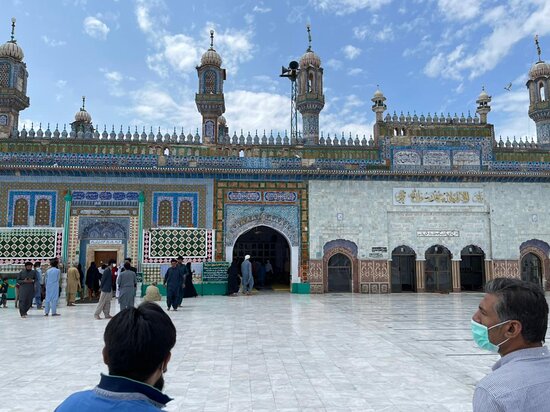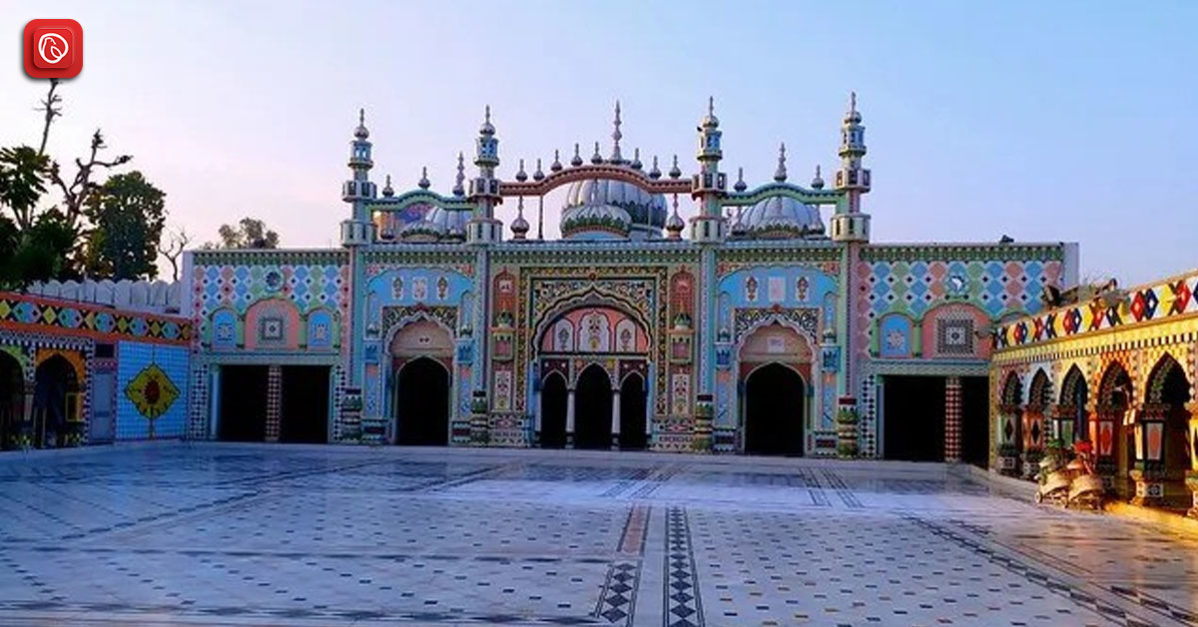Jhang, the city brimming with history, culture, and vibrant life located in Punjab, Pakistan. From its ancient roots dating back to the Indus Valley Civilisation to its modern-day bustling streets, Jhang offers a tapestry of experiences waiting to be discovered. Join us as we delve into the rich heritage, diverse communities, and unique attractions that make Jhang a captivating destination worth exploring.
Whether you’re a history enthusiast, a culinary adventurer, or simply seeking to immerse yourself in the rhythm of local life, Jhang promises an unforgettable journey through its streets and stories. For a detailed account of the city of Jhang, come check this blog at Graana.com.
Etymology
The city and district were historically known as Jhang Sial. The term “Jhang” originates from the Sanskrit word “jāṅgala,” which denotes rough or forested terrain, akin to the modern-day understanding of “jungle.” Thus, Jhang Sial translates to the “terrain of the Sials,” reflecting the historical significance of the Sial tribe in the region.
Places to Visit in Jhang
Following are some of the most popular places to visit in Jhang.
Trimmu Barrage
Trimmu Barrage, located in the Jhang District of Punjab, Pakistan, stands as a vital structure on the River Chenab. Positioned downstream of the confluence of the River Jhelum and River Chenab, it serves approximately 25 kilometres from Jhang city, near Atharan Hazari.
Constructed between 1937 and 1939 by English engineers, notably Chief Engineer James Douglas Hardy Bedford, the barrage was initially established as part of the Indus Water Plan of Pakistan to regulate water flow for irrigation and flood control.
Over the years, Trimmu Barrage has undergone several upgrades, including the construction of new gates and maintenance of existing ones, to enhance its effectiveness in flood management and safeguarding the city of Jhang.
Today, it continues to play a crucial role in managing water resources and mitigating flood risks in the region, demonstrating its enduring importance in Pakistan’s water infrastructure.
Shah Jewna

Shah Jewna, also recognized as Pir Shah Jewna Al-Naqvi Al-Bukhari, was a revered saint of the 16th century and a descendant of the Naqvi Sayyid lineage. Born in Kannauj in 895 A.H. (1493 A.D.), he traced his ancestry back to Jalaluddin Surkh-Posh Bukhari, a prominent advisor to King Sikandar Lodi.
Following the passing of Makhdoom Jahanian Jahangast, Shah Jewna’s ancestors relocated from Kannauj to the town of Shah Jewna, which had been uninhabited until his arrival. Even today, the Makhdoom Jahaniya Mosque stands as a testament to their origins in Kannauj.
Shah Jewna passed away in 971 A.H. (1569) during the reign of Mughal Emperor Jalal-ud-din Akbar. His descendants continue to reside in various regions of both India and Pakistan.
Sultan Bahu

Sultan Bahu, a prominent figure in 17th-century Punjab, was a mystic, poet, scholar, and historian deeply rooted in Sufism. Active during the reigns of Mughal emperors Shah Jahan and Aurangzeb, his life remains shrouded in mystery, primarily known through a hagiography called Manaqib-i Sultani, penned by one of his descendants.
Born in Shorkot, Jhang, in present-day Punjab Province, Pakistan, Sultan Bahu hailed from the Awan tribe. His father, Bayazid Muhammad, served in the Mughal Army. Belonging to the Qadiri Sufi order, Sultan Bahu initiated the mystical tradition known as Sarwari Qadiri.
While credited with over forty books on Sufism, it was his Punjabi poetry that garnered widespread popularity, particularly in genres like qawwali and kafi. His verses continue to resonate through various forms of Sufi music, embodying a unique blend of spiritual depth and lyrical beauty.
Historical Overview of Jhang
Established in 1288 by Rai Sial under the guidance of Hazrat Shah Jalal Bukhari, Jhang boasts a rich and storied history. The Sial tribe governed the city for 360 years until 1822, when Sikh dominance began.
Subsequently, British colonial rule was established. Renowned for its resilient and industrious population, Jhang thrives predominantly on agriculture, particularly wheat and cotton cultivation.
Furthermore, agriculture forms a significant source of income and employment, with approximately 85 percent of cultivable land benefiting from irrigation. Described as hardy peasants, the people of Jhang are known for their straightforwardness, hospitality, and progressive outlook.
Establishment of Municipality, Economic Overview, and Geographic Contrasts
In 1867, Jhang-Maghiana was granted municipality status. From 1902-3 to 1903-4, the city’s income rose from Rs.46,800 to Rs.49,700 due to octroi duties.
Expenditures during this period totaled Rs.44,200. Maghiana, positioned on the highlands overlooking the Chenab Valley, boasted a thriving economy with diverse trade. Conversely, Jhang, located in the lowlands at the valley’s foot, experienced a decline in commerce and significance.
Population, Cultural Importance, and Climate
According to the 1901 census, Jhang-Maghiana’s population stood at 24,381, with Hindus comprising 12,189 and Muslims 11,684 individuals. Jhang holds cultural significance as the burial site of Heer and Ranjha, renowned figures in Punjabi folklore.
It is also the birthplace of notable individuals such as Nobel laureate Dr. Abdus Salam and Allama Haq Nawaz Jhangvi Shaheed. Jhang experiences extreme climate conditions characterised by hot temperatures, with significant fluctuations between summer and winter.
Seasonal Charms
The most delightful period in Jhang spans from mid-February to mid-April, known as spring, transforming the district into a picturesque landscape adorned with lush greenery.
Transportation Challenges, Urban Growth, & Infrastructure Requirements
While rich in cultural heritage, Jhang faces challenges in urban development and transportation. Its streets are congested with various forms of animal transportation, contributing to health issues and accidents.
Overpopulation, littering, power cuts, and water shortages have transformed the once serene city, established by the Sials in the thirteenth century, into a bustling yet neglected urban hub. Addressing these challenges necessitates crucial infrastructure improvements, including the construction of bypasses to alleviate congestion.
Furthermore, enhancing the railway network, particularly by introducing more passenger trains on profitable routes like the Lalamusa-Sargodha-Khanewal railway, is imperative.
These upgrades not only facilitate passenger transportation but also support the movement of agricultural goods, fostering economic development. Additionally, strategically, this railway route serves as a vital alternative in case of disruptions to the main Peshawar-Lahore-Karachi track, ensuring uninterrupted rail traffic flow.
Frequently Asked Questions about Jhang
Following are some of the top FAQs on Jhang.
1. What is the historical significance of Jhang?
Jhang has a rich history dating back centuries. It was founded in 1288 by Rai Sial with the guidance of Hazrat Shah Jalal Bukhari. The city has witnessed various rulerships, including the Sial tribe, Sikhs, and British colonial rule.
2. What is the etymology of the name “Jhang”?
The name “Jhang” is derived from the Sanskrit word “jāṅgala,” which refers to rough or forested terrain, akin to the modern-day understanding of “jungle.”
3. What are some notable cultural and historical landmarks in Jhang?
Jhang is famous for its cultural heritage, including being the burial place of Heer and Ranjha, iconic figures in Punjabi folklore. Additionally, the city has produced notable individuals such as Nobel laureate Dr. Abdus Salam and Allama Haq Nawaz Jhangvi Shaheed.
4. What is the primary economic activity in Jhang?
Agriculture is the mainstay of Jhang’s economy, with crops like wheat, cotton, rice, sugarcane, and maize being cultivated. Livestock farming also plays a significant role in the district’s economy.
5. How is the climate in Jhang?
Jhang experiences extreme climate conditions, with hot summers and notable variations between summer and winter temperatures. Rainfall is minimal, with occasional showers during the winter months.
6. What are the transportation challenges in Jhang?
Jhang faces transportation challenges due to congestion, especially with the prevalence of animal-drawn carts on its streets. Infrastructure development, including the construction of bypasses and improvements in the railway network, is crucial to address these challenges.
7. What steps are being taken for urban development in Jhang?
Efforts are underway to address urban development issues in Jhang, including infrastructure improvements and initiatives to alleviate congestion and accommodate the city’s growing population.
8. How can tourists explore the cultural heritage of Jhang?
Tourists can explore Jhang’s cultural heritage by visiting historical sites, and museums, and attending cultural events and festivals that showcase the region’s rich history and traditions.
In conclusion, Jhang stands as a city steeped in history and cultural richness, offering a glimpse into centuries of tradition and heritage. From its ancient origins founded by Rai Sial to its renowned figures like Dr. Abdus Salam and Allama Haq Nawaz Jhangvi Shaheed, Jhang has certainly contributed significantly to the cultural and intellectual landscape of Pakistan.
Despite facing challenges in urban development and transportation, the city continues to evolve while preserving its unique identity and charm. With ongoing efforts to address infrastructure needs and enhance economic opportunities, Jhang remains poised for growth and prosperity, inviting visitors to explore its vibrant past and promising future.
For more information, visit Graana.com.




